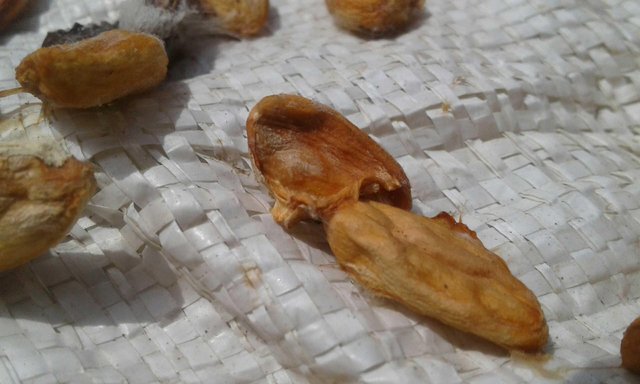success story of a cocoa farmer
My friend Raut face looks more wrinkled, when replying to my smile. His brown leather wrinkles he could not hide. Suprapno, now is no longer young. In fact, it can be called having climbed the age of twilight. Exactly 78 years on May 10 last. A period commonly used by people to be able to enjoy the rest of the old days.

However, the common practice, it seems not to apply to Suprapno. Without stopping to say, his legs continue to walk while inviting me to explore the cocoa plantation along the road of Sungai Langka Village, Gedong Tataan Sub-district, South Lampung. "Well, look at that one! What is the average cocoa fruit in a tree? If I count it, here it can reach 300-400 pieces per tree, "he told me while showing a tree trunk nearby on the roadside.
Thoroughly, I observed the red-fruit fruitful trees of the Suprapno. While trying to count one by one, I then asked, "How can this be so much pack? What about it? "
Suprapno then invites me closer to the cocoa tree. Not long ago, he began to explain in detail, what is the secret that the cocoa farmers in the River Langka in cultivating the crop.
"You see? A lot of black ants in the tree? "
"Yes sir. But do not interfere with harvest time and make
the spread of new diseases? "
"Not exactly! This is the secret. "
"Meaning?"
"Black ants actually counteract pest and disease attacks. And,
the important thing is not to abort the interest. Different if used pesticide.
When nyemprot even many flowers fall. "
I was nodding to hear what Suprapno said. Therefore, so far not a few agricultural extension workers in the field who further advise farmers to use chemicals such as insecticides and fungicides to eradicate cocoa pests and diseases.
However, farmers in Sungai Langka are even antipathy. Suprapno himself admitted very allergic to using chemicals that contain these toxins. "Because the chemical element is bad for cocoa. Plants can be stunted and unhealthy, "he said.
Therefore, he further advises, the cocoa farmers let the black ant (Dolichoderus bituberculatus) live in the tree. This type of insect, he said, can counteract pests and diseases of cocoa, in addition to not interfere with leaves, flowers and stems. In fact, it can help the process of plant pollination. "Black ants are not predators."
Suprapno's belief, certainly not without foundation. During this time, he is keen to learn new science, experiment in the field, and prove himself from the cultivation of cocoa that he created.

He also did not need to reach too many pockets, to care for eight hectares of cocoa gardens. Imagine, with a production cost of nearly 0 percent for maintenance, every year he gets 20 tons of wet beans per hectare or 1.7 tons of wet beans per month. If the price of wet cocoa is at least Rp 5,000 per kilogram, then every month Suprapno earns Rp8.5 million per hectare.
Suprapno is the Chief Coordinator of Satria Utama Farmer Group of Desa Sungai Langka. He was a retired union of the People's Security Army (TKR) in 1974. Although he still has an offer to continue his career in unity, but Suprapno chose to retire. Veterans who pursue army care since 1946, then settled on the River Langka with family.
Initially, Suprapno himself chose coffee and clove farming from the Dutch company's relics on the River Langka. In order to better master the farming techniques, in 1988, he then participated in the Training of Agriculture and National Plantation in Simalungun, North Sumatra.
After returning from the training, he fell in love to seriously cultivate cocoa. He said cocoa is exported to many countries, the harvest time is also very short so as to provide added value for farmers.

From the stock of knowledge in Simalungun, then he tried to practice in his garden. At that time, the seeds he cultivated came from the Provincial Agriculture Office of Lampung obtained from North Sumatra.
nah friend all we have to open cocoa business